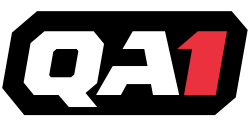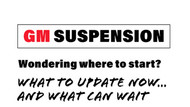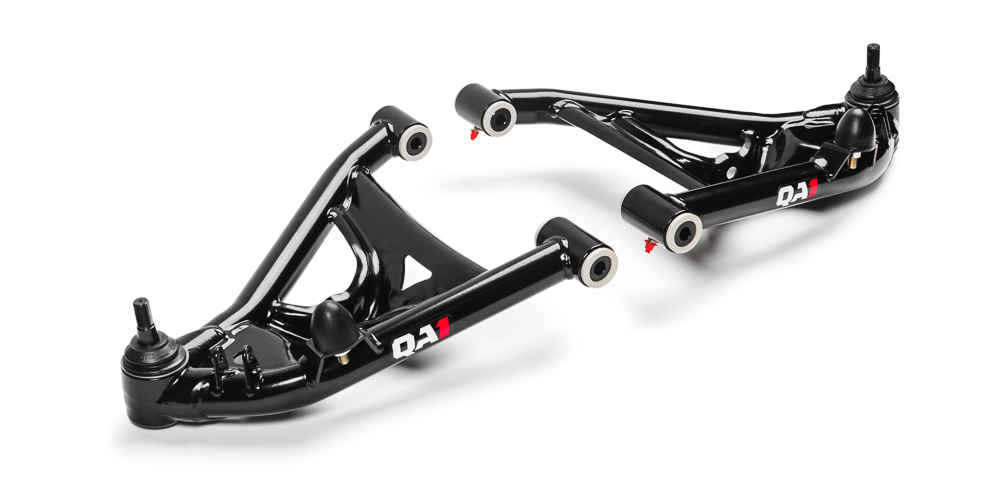GM Muscle Car Suspension Upgrades: What to Update And When
GM MUSCLE CARS: WHAT TO UPGRADE NOW, AND WHAT CAN WAIT
GM had some of the most popular muscle cars ever. It had the Chevelle, Camaro, Nova and Impala, along with their Pontiac, Buick and Oldsmobile cousins. GM really set the bar for power and performance. These cars have a lot going for them. Between the iconic body styles and engine packages, they’re incredibly desirable. However, most would agree the factory suspension is subpar by today’s standards.
BROWSE QA1'S GM SUSPENSION UPGRADES BY VEHICLE
With so many muscle car suspension options out there, many ask “Where do I start?” Luckily, QA1 has several configurations based on your goals. While QA1’s full-vehicle suspension systems are popular, many like to build their vehicle piece-by-piece. You can use the parts list of the suspension system as a sort of road map for upgrades. This helps from a budget standpoint (buying parts individually costs the same as buying the full kit) while minimizing the time the vehicle is down for upgrades.
We’ve been doing this a long time and here’s how we would upgrade items to maximize the best bang for your buck. Follow along as we walk through which parts you should focus on first, and what can wait.
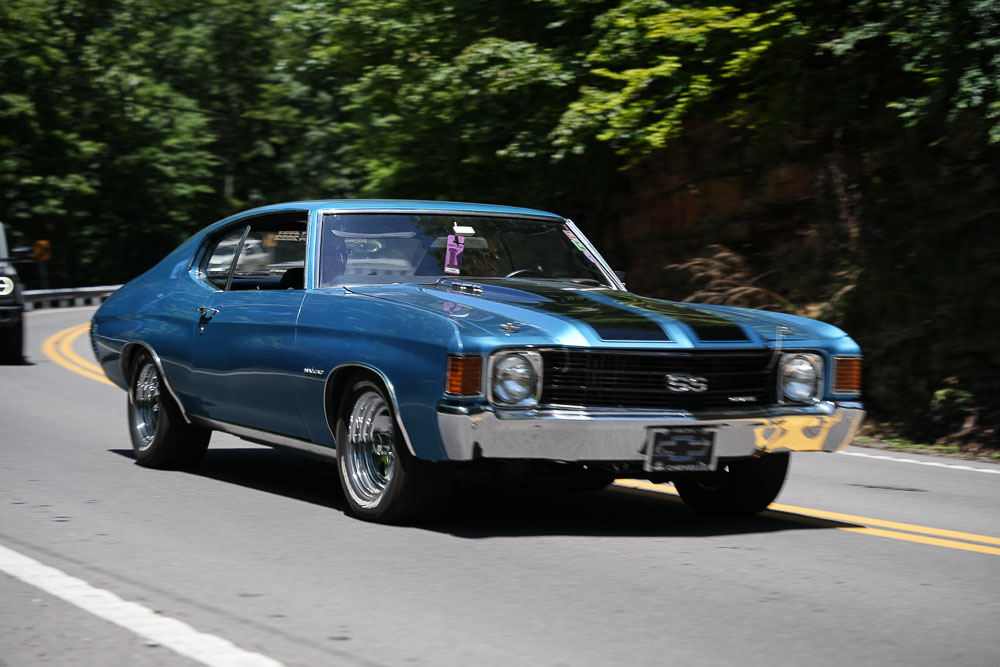
INSPECTION
First, complete an inspection. If the suspension is all original, you’ll definitely want to replace anything that is worn out, broken or unsafe. Get the car up in the air and check over everything. While looking around, grab pieces and see if they move when they shouldn’t. Or look for witness marks - places where things have been rubbing that shouldn’t.
The factory suspension components are stamped steel. Over years of use and abuse, these can tweak or fatigue and crack. For example, GM A-Bodies - such as Chevelles, Skylarcks, Cutlasses and so on - are notorious for having control arms that crack by the lower ball joints. With control arms that old, the rubber bushings are also very likely cracked and won't hold things straight and true anymore.
SHOCKS AND SPRINGS
When it comes time to upgrade, start with the shocks and springs. Generally speaking, shocks and springs make the biggest differences in ride quality. It’s easy to overlook, but these help with handling around corners, braking and just cruising down the road. We offer stock replacements, or you can upgrade to a coil-over system. Our shocks come in non-adjustable, single adjustable or double adjustable to maximize ride quality and help you reach your goals for your car.
We have many different spring rates to complement the shocks as well. If you want to go drag racing, hit curvy back roads, or just cruise down to the burger joint, then we can set you up with different spring rates to help with each one.
SWAY BARS
Next, you’ll want to upgrade to larger sway bars. From the factory, these cars were built to cruise down the road or go in a straight line. They weren’t really designed to carve corners. Our sway bars are larger in diameter than stock to help keep your car flat during hard cornering.
Most GM muslce cars didn’t have sway bars in the rear. Adding QA1 sway bars to the rear of your chassis drastically improve the handling characteristics.
All of our sway bars come with upgraded polyurethane bushings to help eliminate flexing so the sway bar works as efficiently as possible.
TUBULAR CONTROL ARMS
Now you’ve upgraded your shocks, springs and sway bars. To further improve handling, upgrade to a set of QA1 tubular control arms. Tubular control arms aren't just stronger. They also offer improved geometry.
Let’s start at the bushings. Factory control arms utilized a rubber bushing that provided an ultra-comfy ride, but didn’t help in the performance department. QA1 control arms are upgraded with either a polyurethane bushing or a low-deflection UHMW bushing. These bushings still allow deflection so if you hit a pothole they won’t break the car apart. But they are firmer, so the suspension can properly articulate and keep your car on track.
As we mentioned earlier, the stock GM arms are stamped steel and prone to cracking right where the ball joint installs on the lower control arm. To fix that issue, we use high-quality HSLA tubing to hold ball joints in place and ensure the arm is much stronger than factory.
In addition to all of this, the control arms have much more modern geometry characteristics . Back in the '60s, tires were bias ply and liked negative caster. However, today's modern radial tires love positive caster. We also corrected camber curves to help keep your tires planted during cornering. What does this all mean? Your car will drive more nicely down the road and around the track.
TRAILING ARMS
The next logical step is to replace the trailing arms in your rear suspension. They offer many of the same benefits as the front control arms - added strength, reduced weight and better looks. QA1 trailing arms allow the suspension to articulate and go through its full range of motion more easily. This keeps the tires planted during hard launches and hard cornering. All good news, because the upgrades you've made up to this piont will definitely inspire some more aggressive driving.
TUBULAR FRAME SUPPORTS
Now it's time to look at the component all these new parts are bolt to - the frame. After rigorous testing, we’ve figured out the weak points of GM muscle cars and how to fix them. Some of the things GM did back in the day really don’t make sense, and we have the bracing and brackets to help fix those issues. When you start adding horsepower, bigger tires and aggressive driving, stock frames can often flex or break. Make sure to give your frame the attention it needs to get the most out of your upgrades.
4-LINK REAR SUSPENSION: DITCH THOSE LEAF SPRINGS
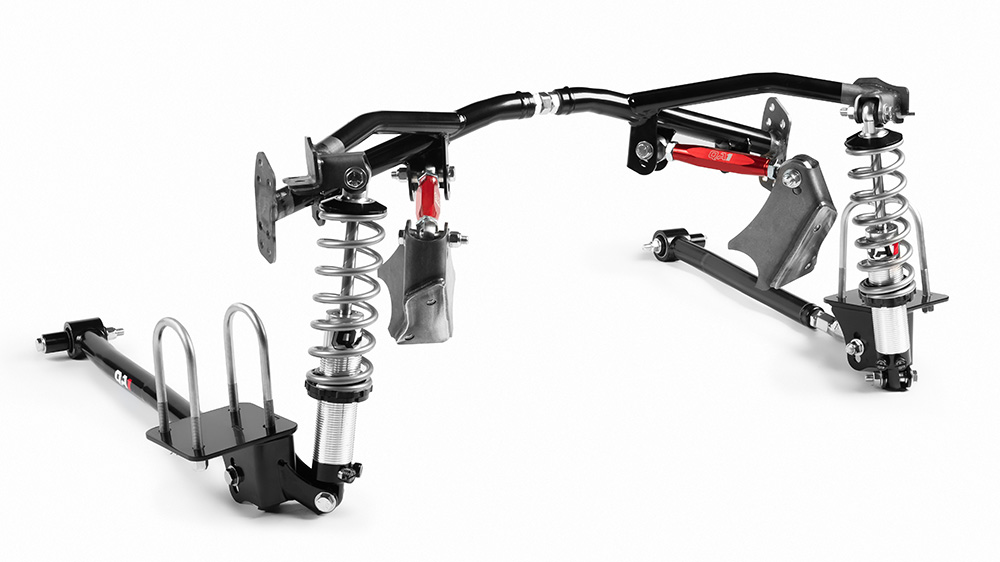
One of the most significant upgrades you can give your vehicle to transform its ride quality, handling, and adjustability is swapping out the factory leaf spring rear suspension with coilovers and a tubular 4-link system. In doing so, you gain full adjustability over ride height, with modern suspension geometry and a noticeable boost in chassis stiffness you’ll feel immediately. Unlike leaf springs, which are plagued by a number of design issues, a tubular 4-link system provides better power transfer, reduces wheel hop, and delivers precise axle control during acceleration and cornering, as the triangulated 4-link design keeps your rear suspension properly located side-to-side. Combined with QA1 adjustable shocks, you gain the ability to fine-tune ride quality and ride height to get just the right stance. Additionally, a tubular 4-link provides more clearance for wider wheels and tires for improved traction and a more aggressive aesthetic.
For owners of 1967-81 Camaros and Firebirds, as well as 1968-72 Chevrolet Nova and Pontiac Ventura, take your 4-link upgrade a step further with a durable and versatile Ford 9-inch rear end housing. This complete bolt-in solution, with 31-spline axles and a rugged construction, increases your performance window to 650 horsepower.
There are many ways to build a project vehicle. Whether you want to do it all at once with a full-vehicle suspension kit, or one piece at a time, we have an option that’s right for you.
For any questions on your ride, please give us a call at (952) 985-5675 or shoot us an email.
